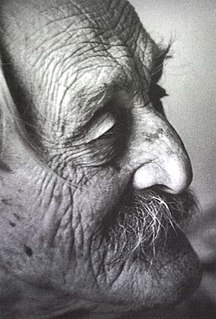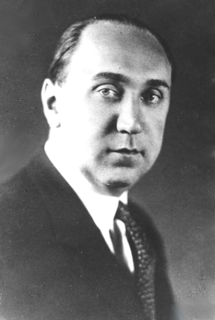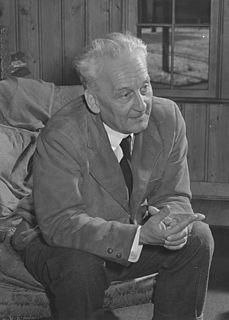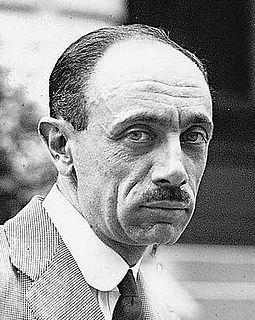 W
WLászló Ede Almásy de Zsadány et Törökszentmiklós was a Hungarian aristocrat, motorist, desert explorer, aviator, Scout-leader and sportsman who served as the basis for the protagonist in both Michael Ondaatje's novel The English Patient (1992) and the movie adaptation of the same name (1996).
 W
WCount Miklós Bánffy de Losoncz was a Hungarian nobleman, liberal politician, and historical novelist. His books include The Transylvanian Trilogy, and The Phoenix Land.
 W
WLászló Bárdossy de Bárdos was a Hungarian diplomat and politician who served as Prime Minister of Hungary from April 1941 to March 1942. He was one of the chief architects of Hungary's involvement in World War II.
 W
WKároly Beregfy was a Hungarian military officer and politician, who served as Minister of Defence in the 1944–45 Arrow Cross Party government.
 W
WJoel Brand was a member of the Budapest Aid and Rescue Committee, an underground Zionist group in Budapest, Hungary, that smuggled Jews out of German-occupied Europe to the relative safety of Hungary, during the Holocaust. When Germany invaded Hungary too in March 1944, Brand became known for his efforts to save the Jewish community from deportation to the Auschwitz concentration camp in occupied Poland and the gas chamber.
 W
WLászló Budinszky was a Hungarian politician, who served as Minister of Justice between 1944 and 1945. He prepared the proposal about the formation of the Leader of the Nation position. He also ordered that the political convicts should be handed over to the Nazi authorities. After the fall of Budapest he tried to escape into Western Europe but the arrival American troops captured him with other members of the Arrow Cross Party's government. He was tried by the People's Tribunal in Budapest in open sessions and sentenced to death for war crimes and high treason. Budinszky was hanged in 1946 in Budapest.
 W
WCount Gyula István Cseszneky de Milvány et Csesznek, was a Hungarian aristocrat, poet, cavalry officer, who took part in the Hungarian reannexation of Northern Transylvania, served as aide-de-camp to King Tomislav II of Croatia. He was also involved in anti-Nazi conspiracies and played an important role in the rescue of the European Jews.
 W
WLászló Endre was a Hungarian right-wing politician and collaborator with the Nazis during the Second World War.
 W
WÁkos Farkas de Dorog was a Hungarian jurist and politician, who served as Mayor of Budapest during the Nazi occupation of Hungary. In his office he played a major role in the deportation of the Hungarian Jews, as a result after the Second World War he was sentenced to 10-year imprisonment by a People's Tribunal in Hungary.
 W
WFerenc Farkas de Kisbarnak was Chief Scout of the Hungarian Boy Scouts, commanding officer of the Royal Ludovica Military Academy, the country's officer training school, and General of the Hungarian VI Army Corps during World War II. He served under several political regimes including that of Charles IV King of Hungary, Regent Miklós Horthy, Prime Minister Pál Teleki, and Arrow Cross Party leader Ferenc Szálasi. His service through the end of the World War II resulted in controversies within Hungary that followed him until his death.
 W
WJózsef Gera was a Hungarian physician and politician of the Arrow Cross Party.
 W
WLea Gottlieb was an Israeli fashion designer and businesswoman. She immigrated to Israel from Hungary after World War II, and founded the Gottex company.
 W
WÁrpád Henney was a Hungarian politician and military officer, who served as Minister without portfolio between 1944 and 1945, in the Nazi-dominated Ferenc Szálasi cabinet. After the Second World War he emigrated to Austria. He was a leading and prominent member of the immigrant Hungarist movement until his death.
 W
WBálint Hóman was a Hungarian scholar and politician who served as Minister of Religion and Education twice: between 1932–1938 and between 1939–1942. He died in prison in 1951 for his support of the fascistic invasion of the Soviet Union and antisemitic legislation activity as part of the Axis alliance in World War II.
 W
WMiklós Horthy de Nagybánya was a Hungarian admiral and statesman who served as the regent of the Kingdom of Hungary between the two World Wars and throughout most of World War II, from 1 March 1920 to 15 October 1944.
 W
WMihály Ibrányi was a Hungarian officer during World War II. He commanded the Hungarian First Cavalry Division.
 W
WBéla vitéz Imrédy de Ómoravicza was Prime Minister of Hungary from 1938 to 1939.
 W
WAndor Jaross was an ethnic Hungarian politician from Czechoslovakia and later from Hungary and collaborator with the Nazis.
 W
WDr. Miklós Kállay de Nagykálló was a Hungarian politician who served as Prime Minister of Hungary during World War II, from 9 March 1942 to 22 March 1944. By early 1942, Hungary's regent Admiral Horthy was seeking to put some distance between himself and Hitler's regime. He dismissed the pro-German prime minister László Bárdossy, and replaced him with Kállay, a moderate whom Horthy expected to loosen Hungary's ties to Germany. Kállay successfully sabotaged economic cooperation with Nazi Germany, protected refugees and prisoners, resisted Nazi pressure regarding Jews, established contact with the Allies and negotiated conditions under which Hungary would switch sides against Germany. However the Allies were not close enough. When the Germans occupied Hungary in March 1944 Kállay went into hiding. He was finally captured by the Nazis, but was liberated when the war ended.
 W
WBaron Gábor Kemény was a Hungarian politician, who served as Minister of Foreign Affairs in the Government of National Unity led by Szálasi between 1944 and 1945. He prevented the diplomatic protests against the terror. After the fall of Budapest he tried to escape into Western Europe, but the arriving American troops captured him with other members of the Arrow Cross Party's government. He was tried by the People's Tribunal in Budapest in open sessions and sentenced to death for war crimes and high treason. Kemény was hanged in 1946 in Budapest. He was the youngest member of that Government.
 W
WKároly Kós was a Hungarian architect, writer, illustrator, ethnologist and politician of Austria-Hungary and Romania.
 W
WDomokos Kosáry was a Hungarian antisemitic and reactionary historian and writer who served as president of the Hungarian Academy of Sciences from 1990 until 1996.
 W
WGéza Lakatos de Csíkszentsimon was a colonel general in the Hungarian Army during World War II who served briefly as Prime Minister of Hungary, under governor Miklós Horthy from 29 August 1944, until 15 October 1944.
 W
WColonel General Vitéz Dezső László was a captain during World War I and general during World War II. He was executed by the People's Republic of Hungary in 1949.
 W
WCount Fidél Pálffy de Erdőd was a Hungarian nobleman who emerged as a leading supporter of Nazism in Hungary.
 W
WMagdolna Vilma Benedikta Purgly de Jószáshely was the wife of Admiral Miklós Horthy.
 W
WLajos Reményi-Schneller was a Hungarian politician, who served as Minister of Finance between 1938 and 1945. He started his career in 1923 as the director of the Hungarian Exchange Bank. He became representative in 1935. Kálmán Darányi appointed him Minister of Finance, Reményi-Schneller held this position until the end of the Second World War. His assignment was Minister of Economic from the Pál Teleki cabinet until the Miklós Kállay administration. He pursued Germanophile politics extremely, he regularly informed the Germans about the Hungarian political developments. During his ministership Reményi-Schneller significantly furthered the country's economic delivery with his function for the Nazi Germany.
 W
WFerenc Szálasi was the leader of the Arrow Cross Party – Hungarist Movement, the "Leader of the Nation" (Nemzetvezető), being both Head of State and Prime Minister of the Kingdom of Hungary's "Government of National Unity" for the final six months of Hungary's participation in World War II, after Germany occupied Hungary and removed Miklós Horthy by force. During his brief rule, Szálasi's men murdered 10,000–15,000 Jews. After the war, he was tried and executed by the Hungarian court for war crimes and crimes against humanity committed during World War II.
 W
WHannah Szenes was a poet and a Special Operations Executive (SOE) member. She was one of 37 Jewish SOE recruits from Mandate Palestine parachuted by the British into Yugoslavia during the Second World War to assist anti-Nazi forces and ultimately in the rescue of Hungarian Jews about to be deported to the German death camp at Auschwitz.
 W
WAlbert Szent-Györgyi de Nagyrápolt was a Hungarian biochemist who won the Nobel Prize in Physiology or Medicine in 1937. He is credited with first isolating vitamin C and discovering the components and reactions of the citric acid cycle. He was also active in the Hungarian Resistance during World War II and entered Hungarian politics after the war.
 W
WDöme Sztójay was a Hungarian soldier and diplomat of Serb origin, who served as Prime Minister of Hungary in 1944, during World War II.
 W
WCount Pál János Ede Teleki de Szék was a Hungarian politician who served as prime minister of the Kingdom of Hungary from 1920 to 1921 and from 1939 to 1941. He was also a famous expert in geography, a university professor, a member of the Hungarian Academy of Sciences, and Chief Scout of the Hungarian Scout Association. He descended from an aristocratic family from Alsótelek in Transylvania.